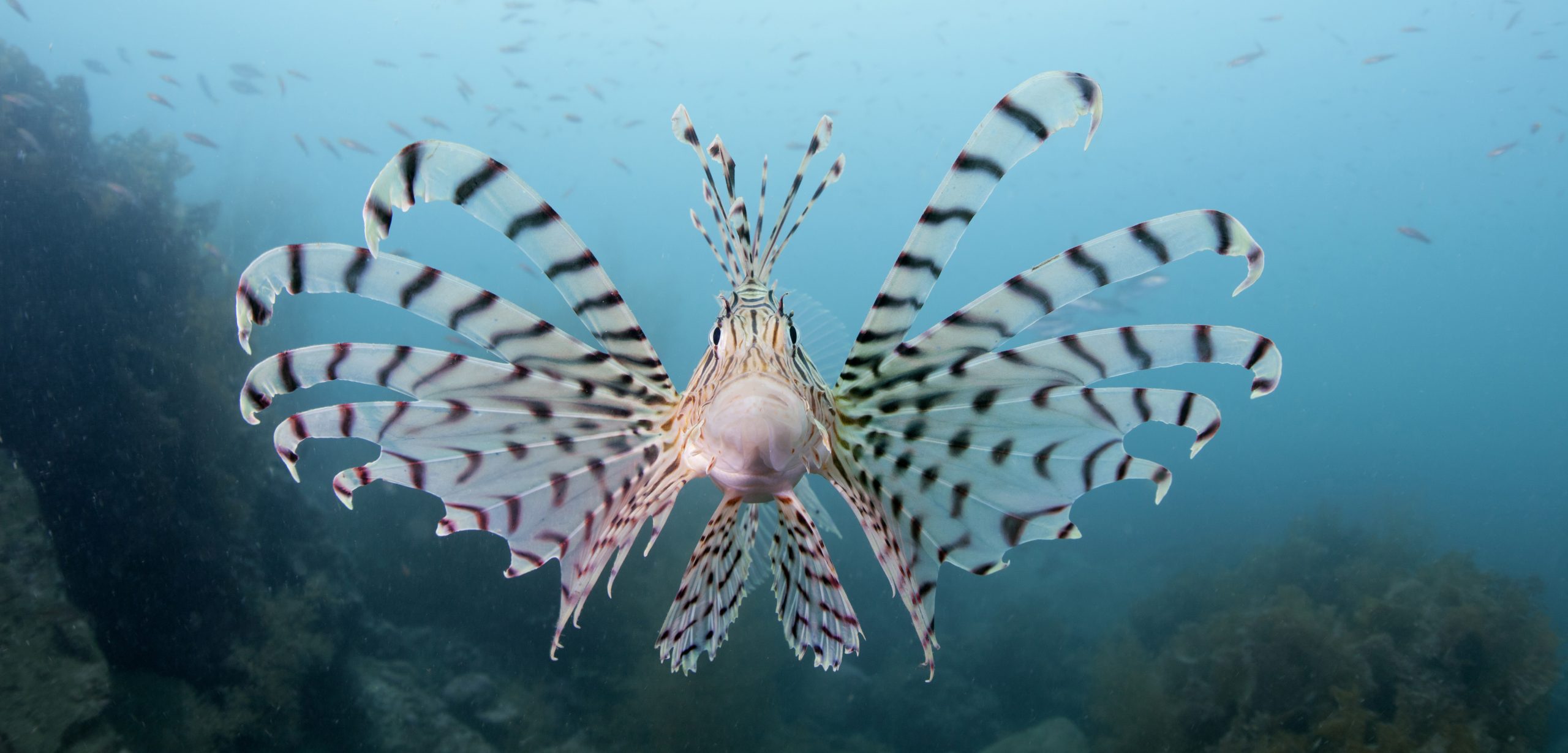The Value of Fish Pee
Are invasive lionfish disrupting the nutrient balance, as well as the food web?
Article body copy
“I tell my students that when they swim on a coral reef, they are actually swimming through fish pee,” says Isabelle Côté. Their typical response? “Ew, that’s gross.”
Gross, perhaps, but also important. “Nutrient budgets are not very sexy,” admits Côté, but they are also poorly understood on coral reefs, where much of the influx of essential nutrients like nitrogen and phosphorus comes from fish. Those essential nutrients are important for coral and plant growth on the reef, functions that maintain the reef’s structural integrity and provide food for its inhabitants. That’s why Côté, a professor of marine ecology at Simon Fraser University, and her doctoral student Fiona Francis, are literally diving into fish pee.
At the Cape Eleuthera Institute in the Bahamas, Côté and her students study a number of tiny patch reefs: dome-shaped pockets of coral in a big sandy basin. For the past eight years in these cerulean blue Bahamian waters, they have studied the effects of invasive lionfish. Côté’s team suspects that these venomous predators not only nibble down native fish numbers, but also affect the net influx of fish urine, a phenomenon with trickle-down effects such as reduced fertilization of algae and seagrass, important food sources for herbivorous fish.
The big question is, when it comes to the inflow of beneficial nutrients, does the pee of the big, invading lionfish make up for the pee lost from the little fish it eats? Or does this invader create a nutrient deficiency?
Last summer, Francis and her team swam on multiple reefs of differing sizes to count and measure fish. Using tiny nets, they captured representatives from all of the major fish groups, including lionfish.
Côté describes the experiment as “a bit like in Finding Nemo, when the fish escape the dentist’s aquarium and they end up in plastic bags.” During 30 minutes in a water-filled bag, kept at stable temperatures inside a cooler, fish such as bright yellow French grunts, parrotfish, and wrasse had plenty of time to do their business before release. Then, because the initial chemical constituents of the bagged water were already known, the researchers could measure how much nitrogen and phosphorus the fish produced.
In a second experiment, Francis investigated how the number of fish affects the quantities of algae, a food source for grazing fish. Fish urine’s enhancing effect on algal growth is well known in aquariums, but not so well studied in nature. So Francis built 24 cages in natural seagrass beds and enclosed French grunt, a locally abundant fish species that’s a favorite food for lionfish. Caging fish at high, low, or zero densities, each enclosure also included tiny ceramic tiles. Periodic scrapings of the tiles were made to measure algal growth. Back at the lab, Francis weighed and measured her tiny bits of dried algae to test the effect of an area being piss-poor.
Studying fish waste is a new field, at least on coral reefs, says Francis. “We have a really good idea now of how much of these nutrients [nitrogen and phosphorus] are in fish pee for different species and different sizes of fish,” explains Côté.
Now, they will use that data to calculate reef-wide estimates, and determine whether lionfish are inflicting a net loss not only on fish numbers, but also on the beneficial nutrients that the reefs receive via fish urine, a donation that not only stimulates coral growth but likely fertilizes the sea plants many fish depend on for food.
Their results remain to pee seen.

